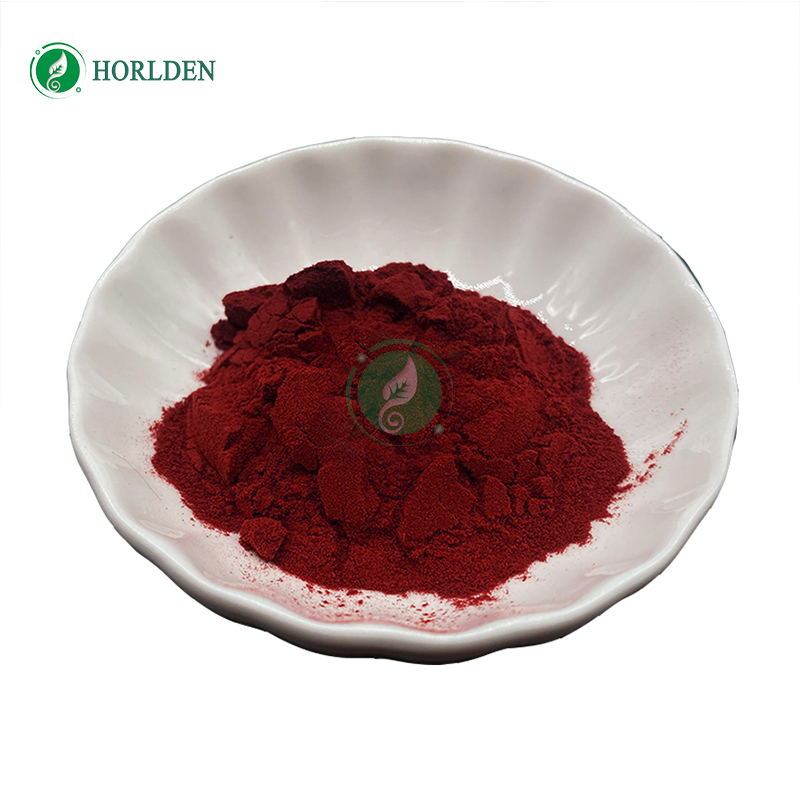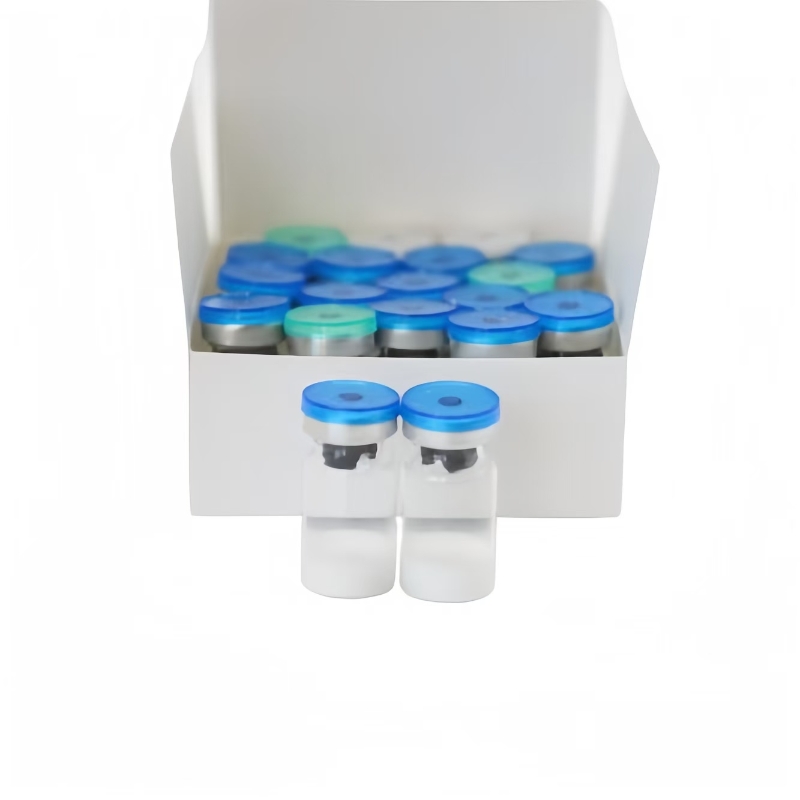In depth analysis of the four potential anti-tumor drugs, can dominate the domestic market?
-
Last Update: 2018-07-12
-
Source: Internet
-
Author: User
Search more information of high quality chemicals, good prices and reliable suppliers, visit
www.echemi.com
Under the promotion of multiple factors such as encouraging innovative drug policies, reducing import drug tariffs, giving priority to review and approval, and increasing prevalence, more and more imported anti-tumor drugs will enter China's market quickly in the future, and the approved anti-tumor drugs in China will gradually realize the international synchronization Industry insiders also predict that in 2018, China will usher in the year of tumor innovative drugs listing, and many imported and domestic heavyweight anti-tumor drugs will be approved for listing Market competition will exist between all imported and domestic anti-tumor drugs In order to win in the fierce market competition, we should not only rely on the excellent product and R & D ability, but also rely on the comprehensive marketing strength, service ability and accurate market positioning of the enterprise, and effectively improve the drug access and survival benefits of cancer patients in China In the context of accelerating the integration of anti-tumor drugs with international standards, in 2017, among the approved new anti-tumor drugs in China, there are four potential varieties that deserve special attention As a new drug with a strong point of view and good performance in the global market, how much can it gain in the Chinese market? Enterprise: AstraZeneca highlights: the world's first three-generation EGFR-TKI targeted drug is the world's first third-generation targeted drug for advanced lung cancer Tagrisso mesylate tablets developed by AstraZeneca were first listed in the United States in November 2015, and approved by CFDA in March 2017 Oshitinib is suitable for the treatment of local advanced or metastatic non-small cell lung cancer (NSCLC) adult patients with EGFR T790M mutation positive, who have been treated with EGFR tyrosine kinase inhibitor (TKI) before or after treatment, and who have been confirmed by detection At present, oshitini has been listed in more than 60 countries In 2017, the global sales volume was 955 million US dollars, with an annual growth rate of 126% The incidence rate and mortality rate of lung cancer are the first place in China's malignant tumors, of which NSCLC accounts for about 85% of the total lung cancer At present, the clinical treatment of lung cancer in China is still mainly the combination of traditional chemotherapy and radiotherapy, but for the advanced NSCLC patients diagnosed as EGFR mutation positive by gene detection, the use of EGFR-TKI targeted drugs has become the standard treatment plan Competition pattern EGFR-TKI targeted drugs for the treatment of advanced NSCLC in China have covered one to three generations, mainly including gefitinib, erlotinib, exetinib, afatinib and oxitinib, and some of them have been listed in domestic generic drugs Most of the patients with EGFR mutation positive advanced NSCLC will develop resistance related to T790M mutation after using the first and second generation EGFR-TKI targeted drugs In this case, the third generation of oxitinib is a better choice for further treatment (click the picture to enlarge) Eliza, Troika and Kemena are listed earlier in China, and the domestic EGFR-TKI target drug market is basically occupied by these three Currently, the three varieties are included in the national drug price negotiation and medical insurance catalog In 2017, the listing of new varieties of the same kind, jitari, Teresa and domestic imitated varieties, IRICO, intensified the market competition, and the market pattern is changing At present, dozens of domestic enterprises are applying for generic drugs of gefitinib, erlotinib and afatinib, among which there are many enterprises with strong R & D strength, such as Hengrui, Zhengda Tianqing, Zhejiang Huahai Pharmaceutical Co., Ltd., and erlotinib hydrochloride tablets of Shanghai chuano were included in the priority review list by CDE in 2017 In 2018, several domestic generic drugs of gefitinib, erlotinib and afatinib are expected to be approved for marketing As the world's first third-generation targeted drug for advanced lung cancer, the approval of tiresar to market undoubtedly brings new treatment options for NSCLC patients in China But in the future, the market competition of EGFR-TKI targeted drugs for advanced NSCLC will be more and more fierce Cortellis predicts that Teresa's global sales will reach US $2.782 billion in 2022 How to get a bigger "cake" in the domestic market remains to be seen Ibudinib (Yike) enterprises: pharmacyclics, cilag highlights: the world's first Btk inhibitor, ibudica (Yike), jointly developed by pharmacyclics and cilag, is the world's first listed Bruton tyrosine kinase (Btk) inhibitor Ibotinib, as a new drug with a new mechanism of action, can inhibit the activity of BTK and the proliferation and diffusion of malignant B cells Yike was first listed in the United States in November 2013 and approved to be listed in China in 2017 The single drug is applicable to the treatment of CLL / SLL patients and MCL patients who have received at least one treatment in the past At present, Yike has been listed in nearly 100 countries and regions around the world, with global sales of US $4.466 billion in 2017, which is one of the fastest-growing products in the field of leukemia and lymphoma With the increasing of its indications, it is expected that the global market will further expand in the future The incidence rate of leukemia and lymphoma in China is about 6/10 However, CLL/SLL and MCL in subdivision diseases are rare diseases in China There is no exact epidemiological data The incidence rate in China is 0.27/10 and 0.16/10 respectively With the aging of China's population and the improvement of the level of diagnosis, the incidence rate of CLL/SLL and MCL has been increasing year by year The main clinical drugs for leukemia and lymphoma in China are rituximab, imatinib, lenalidomide, bortezomib, doxorubicin / epirubicin, methotrexate, ifosfamide / cyclophosphamide, among which rituximab and imatinib occupy a large market share However, most of the patients have primary and acquired drug resistance, and then relapse and poor prognosis As the first Btk inhibitor in the world, Yike has been approved for marketing in China, which can better meet the urgent clinical needs of patients with recurrent or refractory CLL / SLL and MCL in China For domestic imitation of ibutini, Hangzhou Zhongmei Huadong Pharmaceutical Co., Ltd took the lead in obtaining ibutini's clinical approval in May 2016 At present, Harbin Zhenbao Pharmaceutical Co., Ltd., Shanghai huilun Jiangsu Pharmaceutical Co., Ltd., Zhejiang Haizheng Pharmaceutical Co., Ltd., Jiangsu Wanbang bio pharmaceutical / Xingtai Pharmaceutical Co., Ltd., Zhengda Tianqing Pharmaceutical Co., Ltd., Beijing shenlanhai bio Pharmaceutical Co., Ltd and Shandong Xinlu Pharmaceutical Co., Ltd have also obtained clinical approval In addition, because Btk is an attractive potential target in the field of lymphoma and leukemia treatment, domestic enterprises are also actively engaged in the research, development and application of other Btk inhibitors Zanubrutinib (bgb-3111), the second generation Btk inhibitor developed by Baiji Shenzhou, was approved in China in March 2016, and has entered the global phase III and China Phase II clinical stage, with the fastest progress Dtrmwxhs-12, a subsidiary of Zhejiang Haizheng Pharmaceutical Co., Ltd of Zhejiang Daoming pharmaceutical, was approved in China in May 2016 and is currently undergoing phase I clinical trials in China and the United States simultaneously Beijing sailin Ct-1530 of Thailand medicine was approved in September 2016 in China, and it is currently in phase I clinical stage; shr1459 and shr1266 of Hengrui medicine are in phase I clinical stage and preclinical stage respectively Ac0058ta of Essen pharmaceutical and wxfl10230486 of Hubei biomedical industry technology research institute, a subsidiary of humanwell pharmaceutical, are Btk inhibitors and have obtained clinical approval in China, but their indications are rheumatoid arthritis and other immune system diseases, rather than lymphoma and white blood disease It should also be noted that acalabrutinib (calsequence), the second generation Btk inhibitor of AstraZeneca, was approved by FDA for listing at the end of 2017 As a second-line treatment for adult patients with mantle cell lymphoma, it has better safety, effectiveness, tolerance and other aspects, and will directly compete with ibuprofen in the U.S market With the continuous acceleration of drug review and approval in China, acalabrutinib is likely to obtain rapid approval and then go on the market Therefore, there are still uncertainties in the market competition of BTK inhibitors in China in the future Verbofeni (zobov) enterprise: Roche highlights: the first Chinese listed melanoma targeting drug, zelboraf (zobov), is a highly selective small molecule BRAF serine threonine kinase inhibitor, which was listed in the United States in 2011 and approved to be listed in China in 2017 for BRAF treatment The melanoma with V600 mutation positive could not be resected or metastasized Zobov has been listed and sold in nearly 100 countries and regions around the world The incidence rate of melanoma in China is about 0.5 ~ 0.6/10 million, with a mortality rate of about 0.3/10 million In China, about 26% of melanoma patients have BRAF gene mutations, and the most common BRAF gene mutations are BRAF V600E (accounting for about 80% of all mutations) and BRAF v600k (accounting for 5% - 30% of all mutations) At present, the clinical treatment of melanoma in China is mainly chemotherapy and radiotherapy According to the Chinese melanoma diagnosis and treatment guidelines (2015 Edition), the main chemotherapy drugs used for melanoma include dacarbazine / carbazine, temozolomide, paclitaxel / albumin paclitaxel, cisplatin / carboplatin, Forrest and interferon for adjuvant treatment, while the only immunotargeted drugs for melanoma are vimofinil and imatinib At present, there are 8 kinds of immune targeting drugs for melanoma in the world, among which verofinil has been listed in China Except imlygic of Amgen, other seven drugs have been registered and declared in China In particular, nafumab of BMS is the first approved PD-1 / PD-L1 drug in China (click the picture to enlarge) there are 8 kinds of melanoma immune targeting drugs on the market in the world, but no domestic enterprises have yet made a copy application However, for the indications of malignant melanoma, there are clinical studies conducted by domestic enterprises, mainly including js001 (anti PD-1 monoclonal antibody, phase III) of Junshi biology, recombinant human GM-CSF herpes simplex virus (oncolytic virus, phase II) of Beijing Aoyuan Heli biology, shr-1210 (anti PD-1 monoclonal antibody, phase I) of Hengrui medicine and tq-b3233 capsule (chemical medicine, phase I) of Zhengda Tianqing / sailintai And so on Due to the fact that vimofinib only targets some patients with advanced melanoma who are BRAF V600 mutation positive, and the majority of traditional clinical chemotherapy drugs for melanoma in China, as well as the competition of other imported and domestic immune targeted drugs in the future, the market potential of vimofinib in China in the future needs to be considered Lucotinib enterprise: Incyte, Novartis highlight: the first bone marrow fibrosis treatment drug in the world Lukotinib phosphate tablets (jakavi / jakafi), jointly developed by Incyte and Novartis, is a small molecule Jak1 / JAK2 kinase (Janus related kinase) inhibitor, which was approved by FDA in 2011 and is mainly used for the treatment of moderate or high-risk myelofibrosis Jiekewei was officially launched on the market in August 2017 in China, with the indications of "for primary myelofibrosis (PMF) at medium or high risk, true erythrocytosis
This article is an English version of an article which is originally in the Chinese language on echemi.com and is provided for information purposes only.
This website makes no representation or warranty of any kind, either expressed or implied, as to the accuracy, completeness ownership or reliability of
the article or any translations thereof. If you have any concerns or complaints relating to the article, please send an email, providing a detailed
description of the concern or complaint, to
service@echemi.com. A staff member will contact you within 5 working days. Once verified, infringing content
will be removed immediately.







